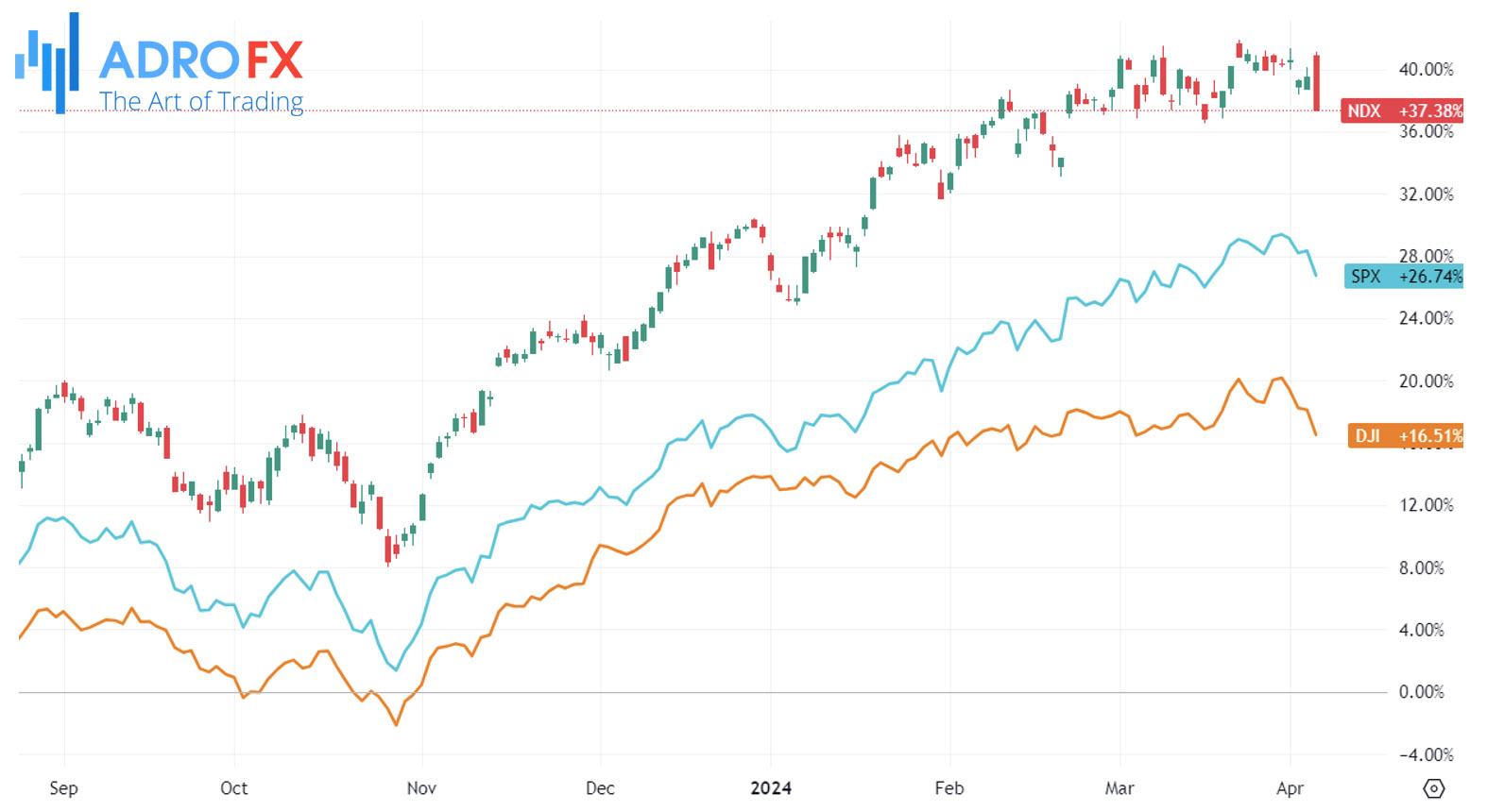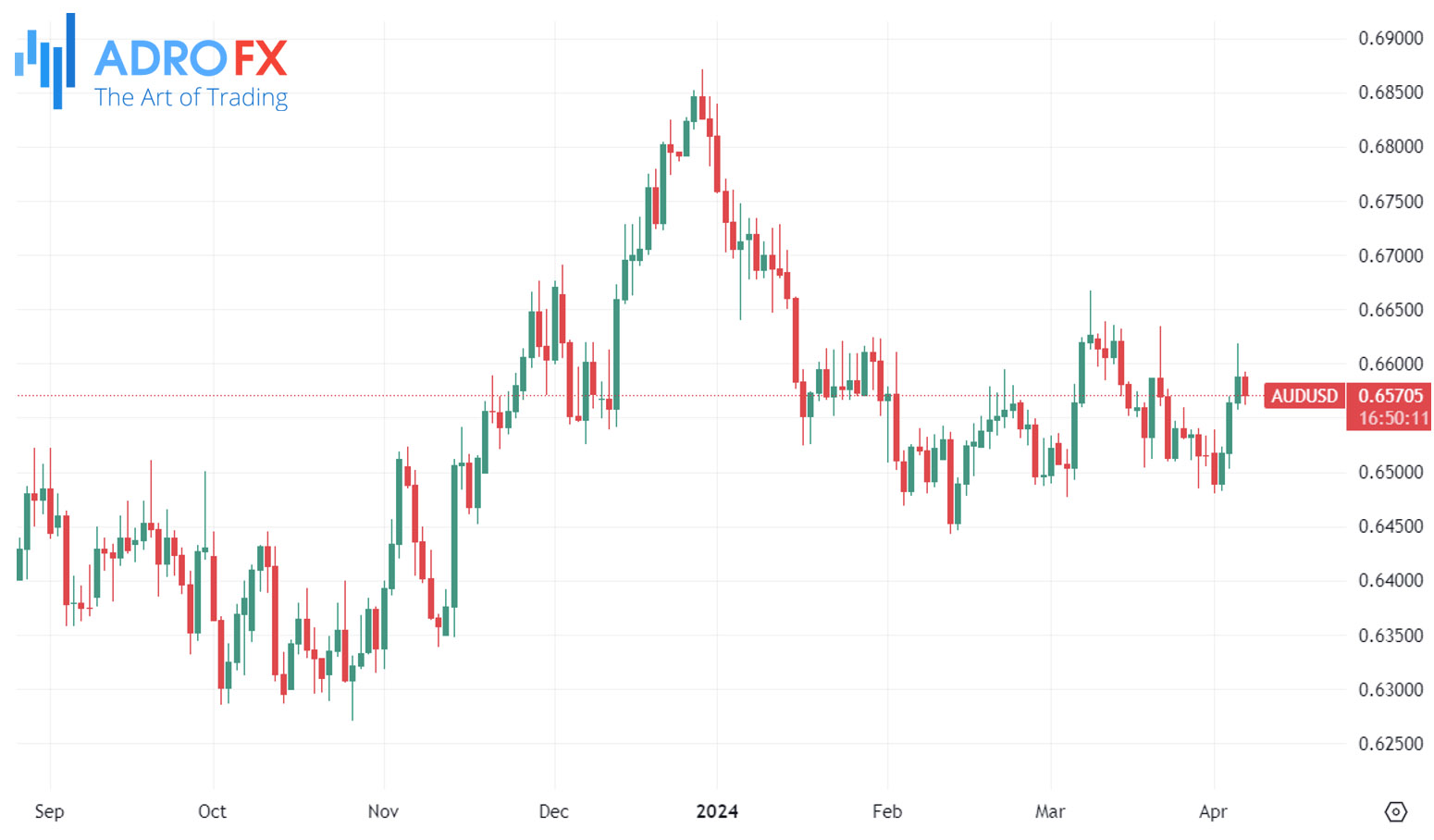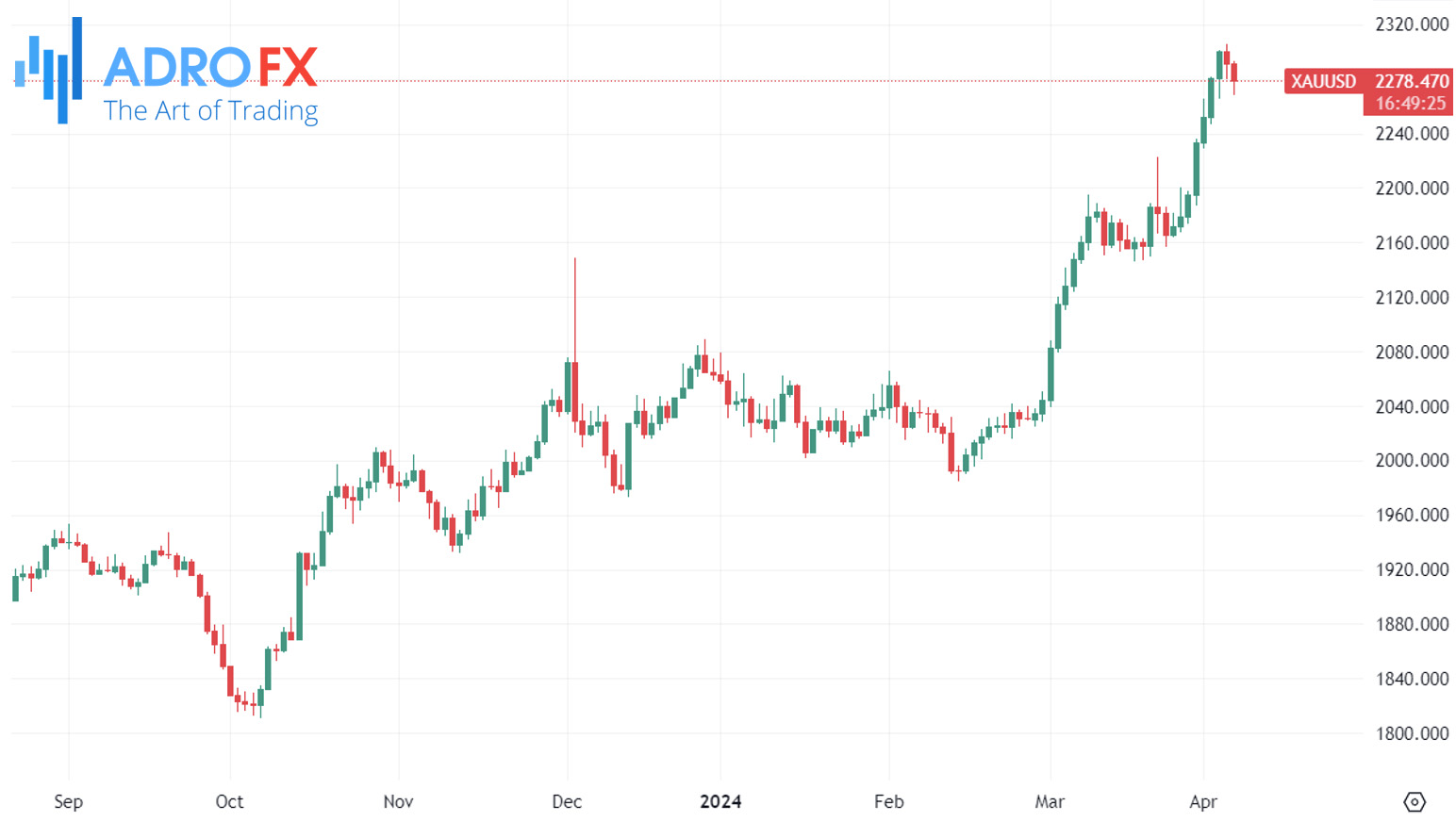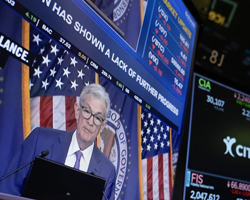Dow Jones Falls Amidst Geopolitical Tensions and Hawkish Fed Remarks; Markets Brace for Non-Farm Payrolls Report | Daily Market Analysis

Key events:
- USA - Average Hourly Earnings (MoM) (Mar)
- USA - Non-Farm Payrolls (Mar)
- USA - Unemployment Rate (Mar)
Thursday marked the fourth consecutive day of losses for the Dow Jones Industrial Average, as intraday gains were relinquished amidst mounting geopolitical tensions and hawkish commentary from Federal Reserve officials, just ahead of the highly anticipated monthly jobs report scheduled for Friday.
The Dow Jones Industrial Average plummeted by 530 points, representing a 1.4% decline, while the S&P 500 and NASDAQ Composite experienced decreases of 1.2% and 1.4%, respectively.

Geopolitical tensions intensified with concerns of a potential escalation in skirmishes between Israel and Iran. Israeli Prime Minister Benjamin Netanyahu vowed to take action against Iran and its allies in response to perceived threats emanating from Iran, particularly following an alleged Israeli attack on the Iranian consulate in Syria.
Adding to market jitters, Federal Reserve officials reiterated the need for patience regarding rate cuts. Minneapolis Fed President Neel Kashkari suggested that rate cuts might not be necessary this year if the trend of declining inflation persists. Similarly, Richmond Fed President Thomas Barkin indicated that the Fed could afford to wait for more favorable inflation data before considering rate adjustments.
Despite these remarks, Treasury yields continued to decline, indicating that the market was not entirely surprised by the hawkish tone of the Fed officials.

Moreover, the release of data earlier on Thursday revealed a higher-than-expected increase in the number of Americans filing new claims for unemployment benefits. Claims rose by 9,000 to reach a seasonally adjusted figure of 221,000 for the week ending March 30, surpassing the anticipated 214,000.
This uptick in jobless claims, after a period of relative stability in March, suggests a potential weakening in labor market conditions. These developments come just ahead of the eagerly awaited Non-Farm Payrolls report for March, adding to the market's apprehension and uncertainty.
The Japanese Yen initially surged to a two-week high against the US Dollar during Friday's Asian session but has since seen a slight retreat, maintaining only modest intraday gains. However, the decline is expected to be limited as persistent geopolitical tensions from the ongoing Russia-Ukraine conflict and turmoil in the Middle East continue to weigh on market sentiment. Additionally, hawkish comments from Federal Reserve officials overnight are dampening investor appetite for riskier assets, which is likely to support the safe-haven appeal of the JPY.

Investors are closely monitoring the possibility of intervention by Japanese authorities to stabilize the domestic currency. Furthermore, Bank of Japan Governor Kazuo Ueda hinted at the potential for a rate hike if JPY movements start to impact inflation and wages, further bolstering support for the JPY.
On the other hand, the Australian Dollar saw its three-day winning streak come to an end following the release of stagnant Final Retail Sales and disappointing Trade Balance data from Australia on Friday. Nonetheless, the USD faced downward pressure due to softer labor market data from the US on Thursday, providing some support for the AUD/USD pair.

Australia's Trade Surplus for March narrowed to 7,280 million, falling short of expectations and February's figure, with Exports declining by 2.2% month-over-month and Imports increasing by 4.8%.
Meanwhile, the price of Gold continued its modest retreat from record highs during the Asian session on Friday. The USD received a boost from hawkish Fed comments, causing the precious metal to lose ground for a second consecutive day. However, geopolitical tensions in the Middle East are providing some support to Gold, as investors typically seek safe-haven assets during times of uncertainty.

Traders are awaiting further cues regarding the Fed's interest rate trajectory before making significant moves in Gold prices. The focus will be on the release of the Non-Farm Payrolls report during the North American session, with any signs of a cooling labor market potentially strengthening the case for a June Fed rate cut. This could lead to renewed selling pressure on the USD and provide additional support to Gold.









